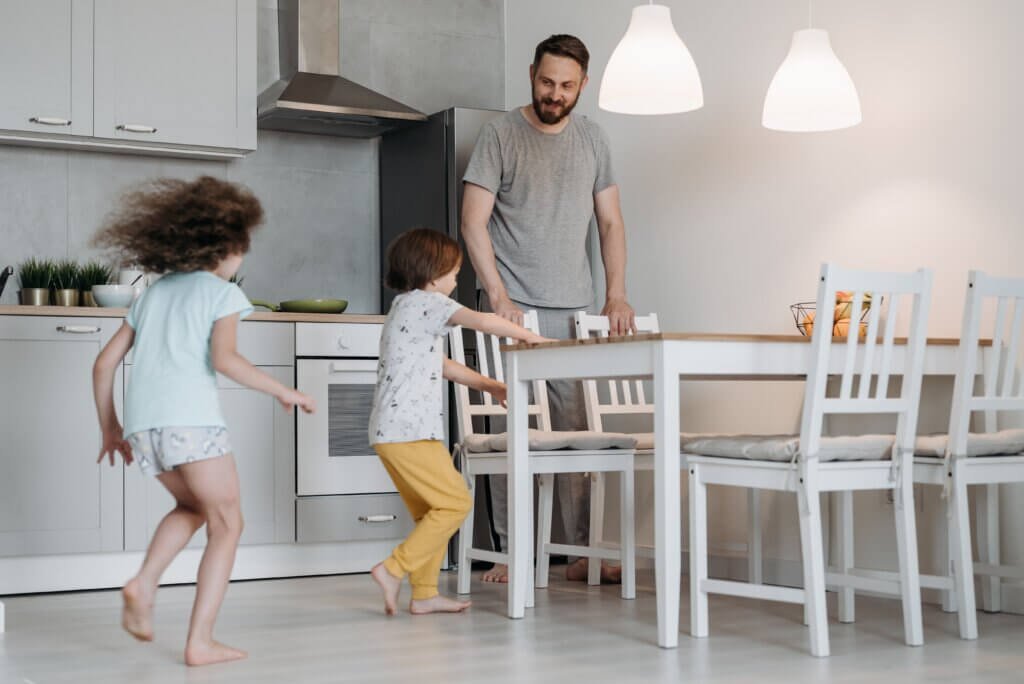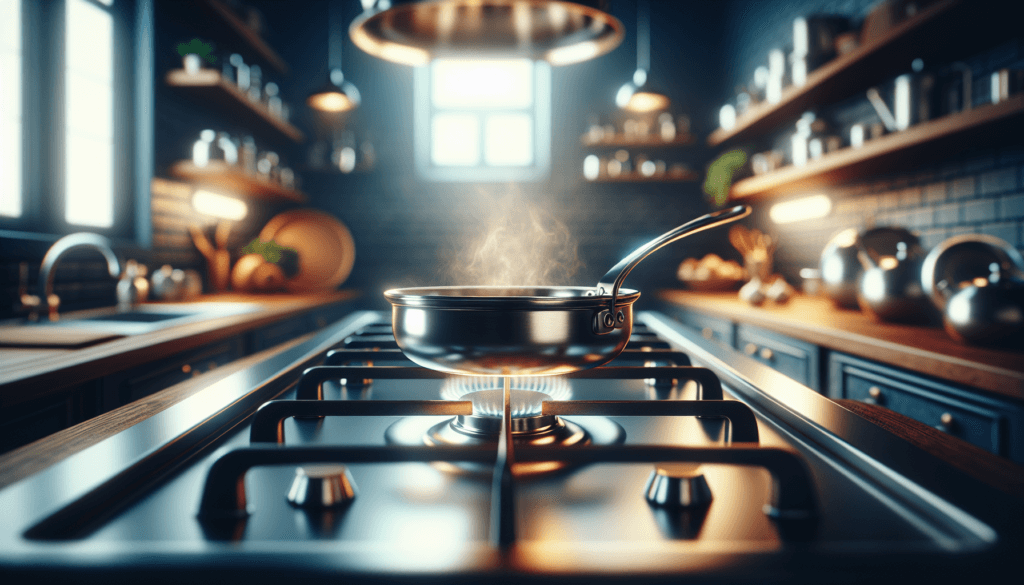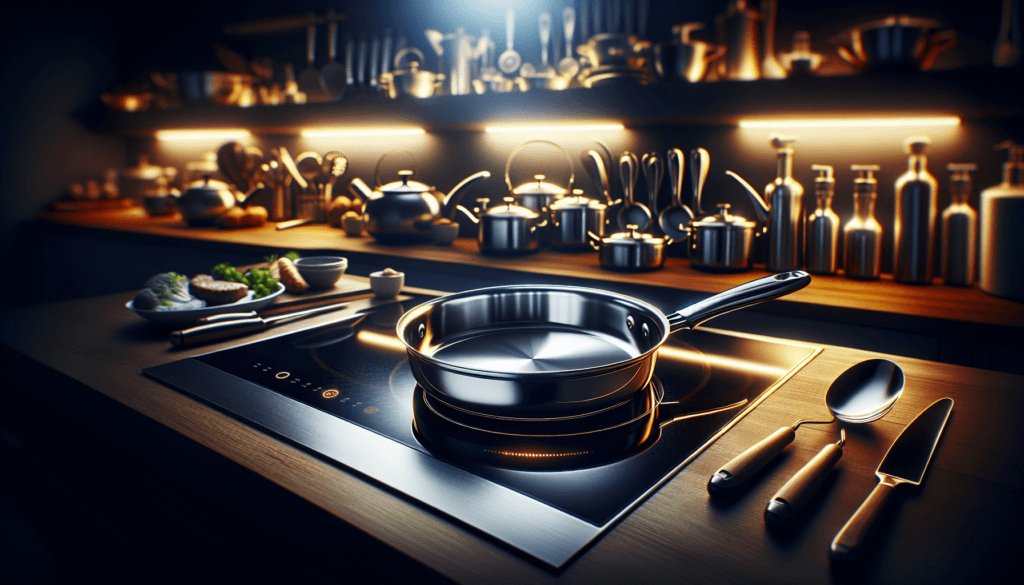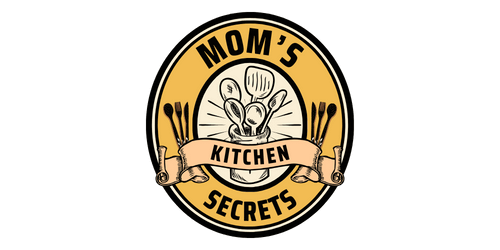Are you tired of struggling with subpar pots and pans in your kitchen? Look no further! In this article, we will guide you through the process of choosing the best pots and pans for your kitchen. From considering the materials to assessing the sizes and shapes, we have got you covered. Say goodbye to burnt food and uneven heat distribution, and say hello to a more enjoyable cooking experience. So, let’s get started on upgrading your cookware collection!
Material
When it comes to choosing the best pots and pans for your kitchen, one of the most important factors to consider is the material they are made of. There are several popular materials to choose from, each with its own unique qualities and benefits.
Stainless Steel
Stainless steel is a popular choice for pots and pans due to its durability and resistance to corrosion. It is also non-reactive, meaning it won’t interact with acidic or alkaline foods, ensuring the flavor of your dishes remains intact. Stainless steel cookware is easy to clean and versatile, making it suitable for a wide range of cooking techniques.
Cast Iron
Cast iron cookware has been used for centuries and is known for its excellent heat retention and even heat distribution. It is incredibly durable and can withstand high heat, making it perfect for searing and frying. Cast iron pans require seasoning to maintain their nonstick properties, but with proper care, they can last for generations.
Nonstick
Nonstick cookware is ideal for low-fat cooking as it requires less oil or butter to prevent food from sticking. The nonstick surface makes cleaning a breeze, as food slides right off without any residue. However, nonstick pans need to be handled with care to avoid scratching the coating, and they may not withstand high heat or metal utensils.
Copper
Copper cookware offers excellent heat conductivity, allowing for precise temperature control. It quickly responds to changes in heat and distributes it evenly across the cooking surface, preventing hot spots. Copper pans are often lined with stainless steel or tin to prevent food from coming into direct contact with the copper, which can react with certain foods.
Aluminum
Aluminum cookware is lightweight, affordable, and heats up quickly, making it suitable for everyday cooking. However, pure aluminum pans can react with acidic foods, altering the taste and appearance of your dishes. To avoid this, most aluminum cookware is now anodized or coated with a nonstick surface.
Cooking Surface
The cooking surface of your pots and pans can greatly affect their performance and the outcome of your dishes. There are two main types of cooking surfaces: smooth and textured.
Smooth Surface
Pots and pans with a smooth cooking surface are versatile and suitable for a wide range of cooking techniques. They allow for even heat distribution, making them perfect for sautéing, frying, and simmering. Smooth surfaces also make cleaning easier as there are no crevices for food to get stuck in.
Textured Surface
Some pans have a textured surface, which can provide better food release and create distinct grill marks. These pans are great for grilling and browning meats and vegetables. However, textured surfaces can be more challenging to clean, as food particles can get trapped in the grooves.

Durability
Durability is an important factor to consider when investing in pots and pans that will last for years to come. Two key aspects of durability to consider are resistance to scratches and dents.
Long-Lasting
Stainless steel, cast iron, and copper cookware are known for their durability and can withstand rigorous use without showing signs of wear and tear. They are less likely to warp or dent, ensuring that your pots and pans maintain their shape and cooking performance over time.
Resistant to Scratches and Dents
While nonstick and aluminum cookware may not be as durable as other materials, they can still be resistant to scratches and dents if handled and cared for properly. Avoid using metal utensils and abrasive sponges on nonstick surfaces, and be mindful of not dropping or mishandling aluminum pans.
Heat Conductivity
The ability of your pots and pans to distribute heat evenly and heat up rapidly can greatly impact your cooking experience and the consistency of your dishes. Here are two important factors to consider when it comes to heat conductivity.
Even Heat Distribution
Cookware made of materials like stainless steel, cast iron, and copper excel at distributing heat evenly across the cooking surface. This ensures that your food cooks uniformly, without any hot or cold spots. Proper heat distribution allows for precise cooking control and better results.
Rapid Heating
If you are looking for pots and pans that heat up quickly, consider options like aluminum and copper. These materials have excellent heat conductivity, allowing them to reach the desired temperature in no time. Rapid heating can be especially beneficial when you are short on time or need to sear meats at high heat.

Oven Compatibility
Being able to use your pots and pans in the oven adds versatility to your cooking options. Here are two factors to consider when it comes to oven compatibility.
Safe for Oven Use
Some cookware is oven-safe, meaning you can safely transfer it from stovetop to oven without any issues. Stainless steel, cast iron, and copper pans are generally safe for oven use, but always check the manufacturer’s instructions to be sure. Nonstick and some aluminum pans may have temperature limitations, so it’s essential to verify their oven suitability.
Maximum Temperature
If you frequently cook dishes that require high oven temperatures, such as roasting or broiling, ensure that your pots and pans can withstand the heat. Stainless steel and cast iron are excellent choices for high-temperature cooking, while nonstick pans may have limitations.
Maintenance
Ease of cleaning and maintenance is an important consideration when choosing pots and pans. Here are three factors to keep in mind.
Ease of Cleaning
Smooth surfaces, such as those found in stainless steel and nonstick cookware, are generally easier to clean. Food slides off more easily, and there are no difficult-to-reach crevices where residue can accumulate. Textured surfaces, like those in grill pans, may require a bit more effort to clean.
Dishwasher Safe
If you prefer the convenience of a dishwasher, make sure your pots and pans are dishwasher safe. While most stainless steel and cast iron cookware can be cleaned in the dishwasher, nonstick pans may require handwashing to preserve the nonstick coating.
Requires Seasoning
Some types of cookware, such as cast iron, require periodic seasoning to maintain their nonstick properties and prevent rusting. Seasoning involves applying a thin layer of oil to the cooking surface and heating the pan to create a protective layer. If you are willing to invest a little extra time and effort, seasoned cast iron pans can provide excellent cooking performance and longevity.

Cooking Techniques
Consider the cooking techniques you use most frequently and choose pots and pans that suit your needs.
Sautéing and Stir-Frying
For these quick and high-heat cooking methods, a pan with even heat distribution, such as stainless steel or cast iron, is ideal. The smooth surface of stainless steel pans allows for easy food release, while the heat retention of cast iron pans ensures a consistent cooking temperature.
Baking and Roasting
When it comes to baking and roasting, oven-safe cookware is essential. Stainless steel and cast iron pans are excellent choices for these cooking techniques as they can withstand high oven temperatures. For baking, consider nonstick pans that ensure easy food release.
Boiling and Simmering
For boiling and simmering, a pot with good heat conductivity, such as stainless steel or copper, is recommended. These materials heat up quickly, allowing for rapid boiling, while also distributing heat evenly for simmering delicate ingredients.
Weight
The weight of your pots and pans can significantly impact your cooking experience, especially if you have physical limitations or prefer lightweight cookware. Here are two factors to consider.
Lightweight
Aluminum cookware is known for its lightweight nature, making it easy to handle and maneuver. If you often find yourself needing to lift and pour from heavy pans, opting for lightweight options can make your cooking tasks more manageable.
Heavy-Duty
Cast iron and stainless steel cookware are heavier but offer superior durability and heat retention. The weight can provide stability on the stovetop and prevent hot spots. While they may be heavier to lift, they can handle high-heat cooking and last a lifetime with proper care.

Handles
The handles of your pots and pans can greatly affect how comfortable and safe they are to use. Here are two handle features to consider.
Stay Cool Handles
Pots and pans with stay-cool handles are designed to remain cool to the touch, even when the cookware is hot. This feature is especially important when transferring pans from stovetop to oven or when using them directly on the stovetop. Stay-cool handles ensure a comfortable grip and minimize the risk of burns.
Removable Handles
Removable handles offer versatility and convenience, especially when it comes to storage. Pans with removable handles can be stacked and stored more compactly, saving valuable cabinet space. They can also double as oven-safe baking dishes or serving vessels when the handles are detached.
Lids
Having well-fitting lids for your pots and pans is essential to retain heat, promote even cooking, and prevent splatters. Consider two key lid features when choosing cookware.
Tight-Fitting Lids
Pots and pans with tight-fitting lids help trap heat and moisture, allowing your food to cook more efficiently. This feature is especially important when simmering, stewing, or braising, as it prevents the liquid from evaporating too quickly.
Transparent Lids
Transparent lids can be a helpful feature when monitoring your cooking without lifting the lid. Being able to see the progress of your dishes without releasing heat or steam can prevent unnecessary interruptions and ensure more consistent results.
In conclusion, choosing the best pots and pans for your kitchen requires careful consideration of various factors such as material, cooking surface, durability, heat conductivity, oven compatibility, maintenance, cooking techniques, weight, handles, and lids. By understanding the different options available and your cooking needs, you can make an informed decision that will enhance your culinary experience and set you up for success in the kitchen. Happy cooking!



